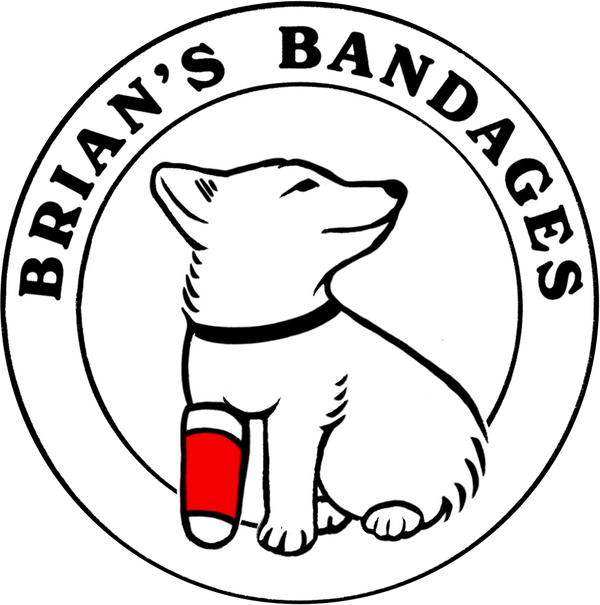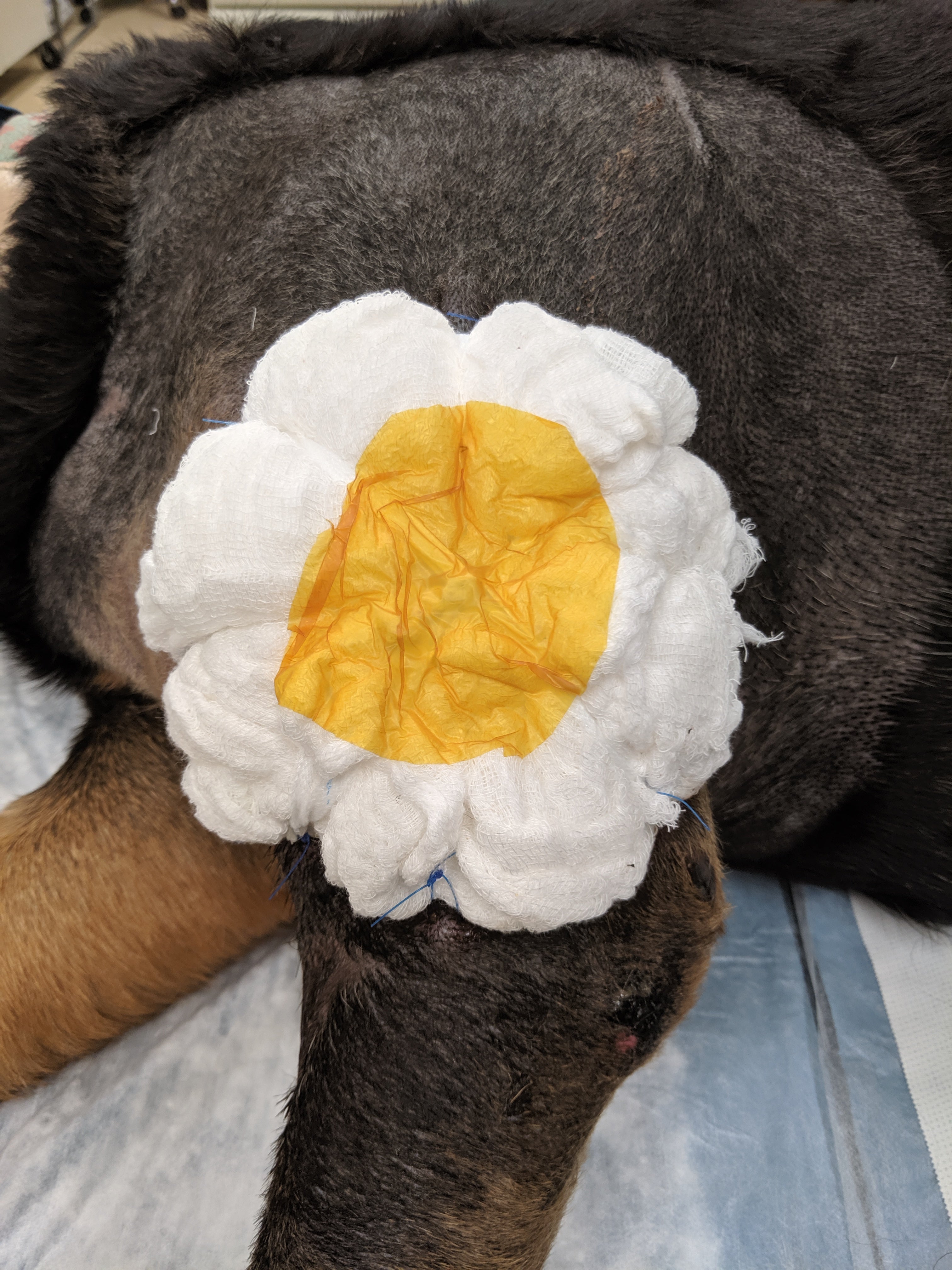
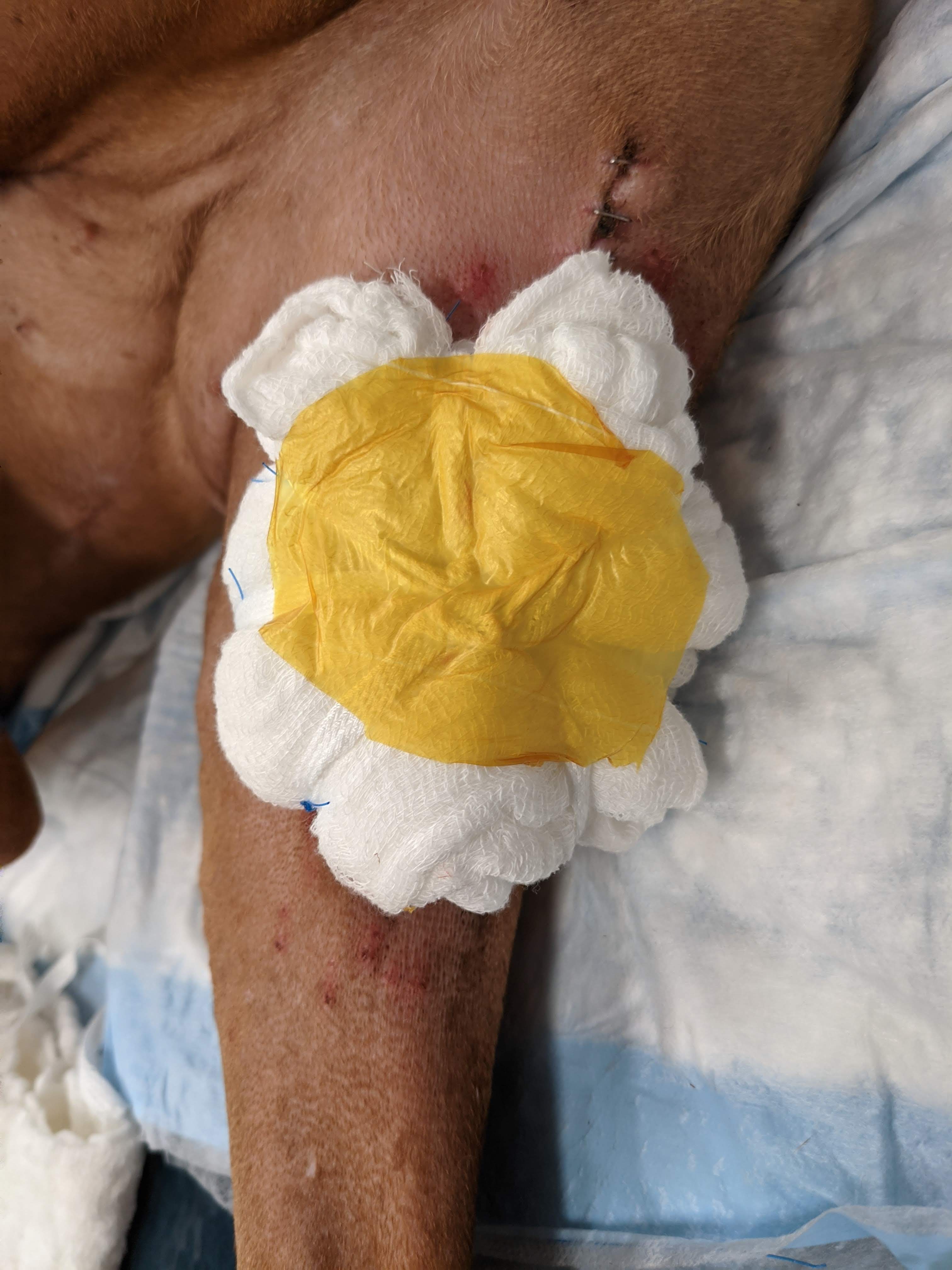
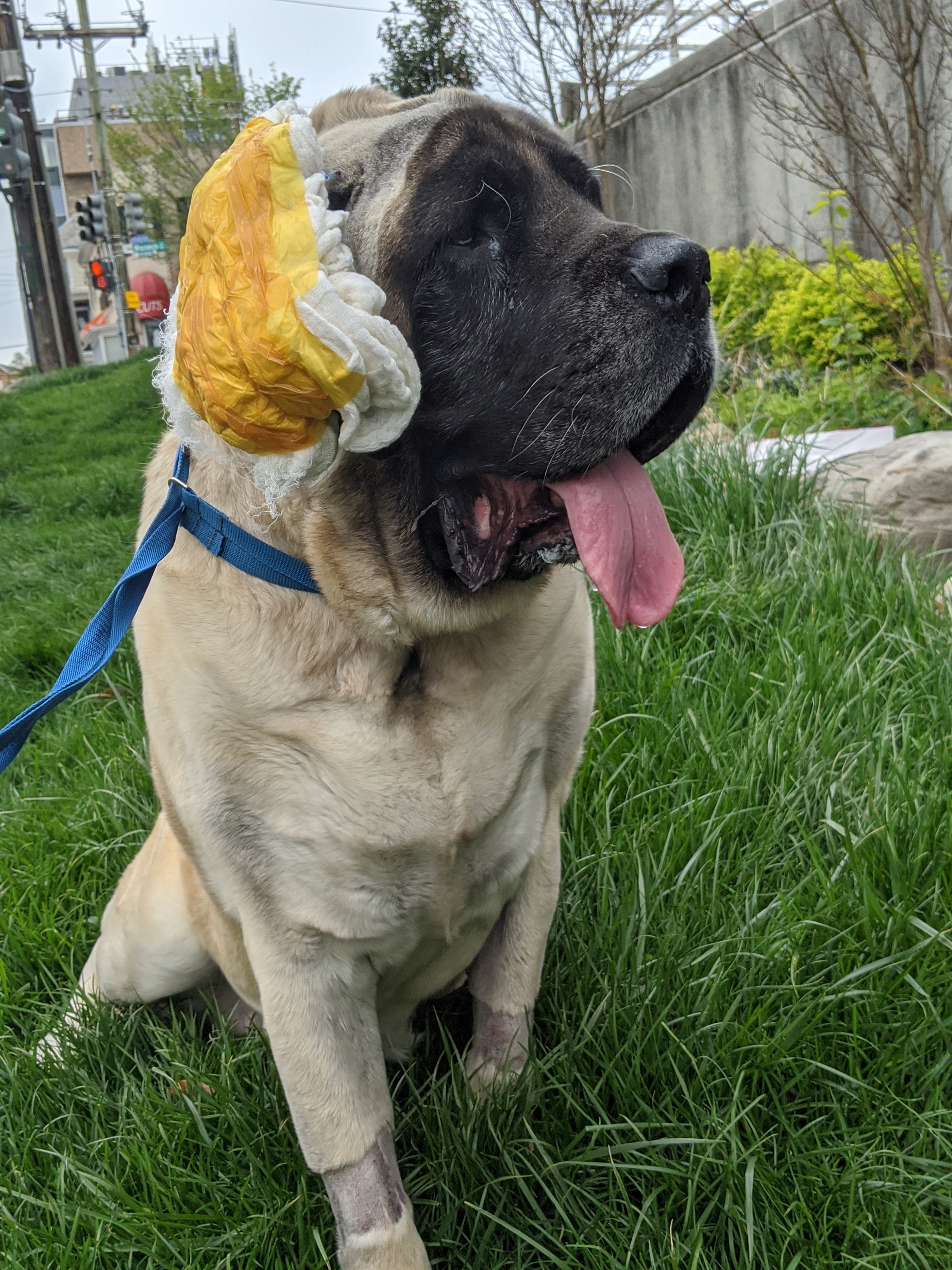
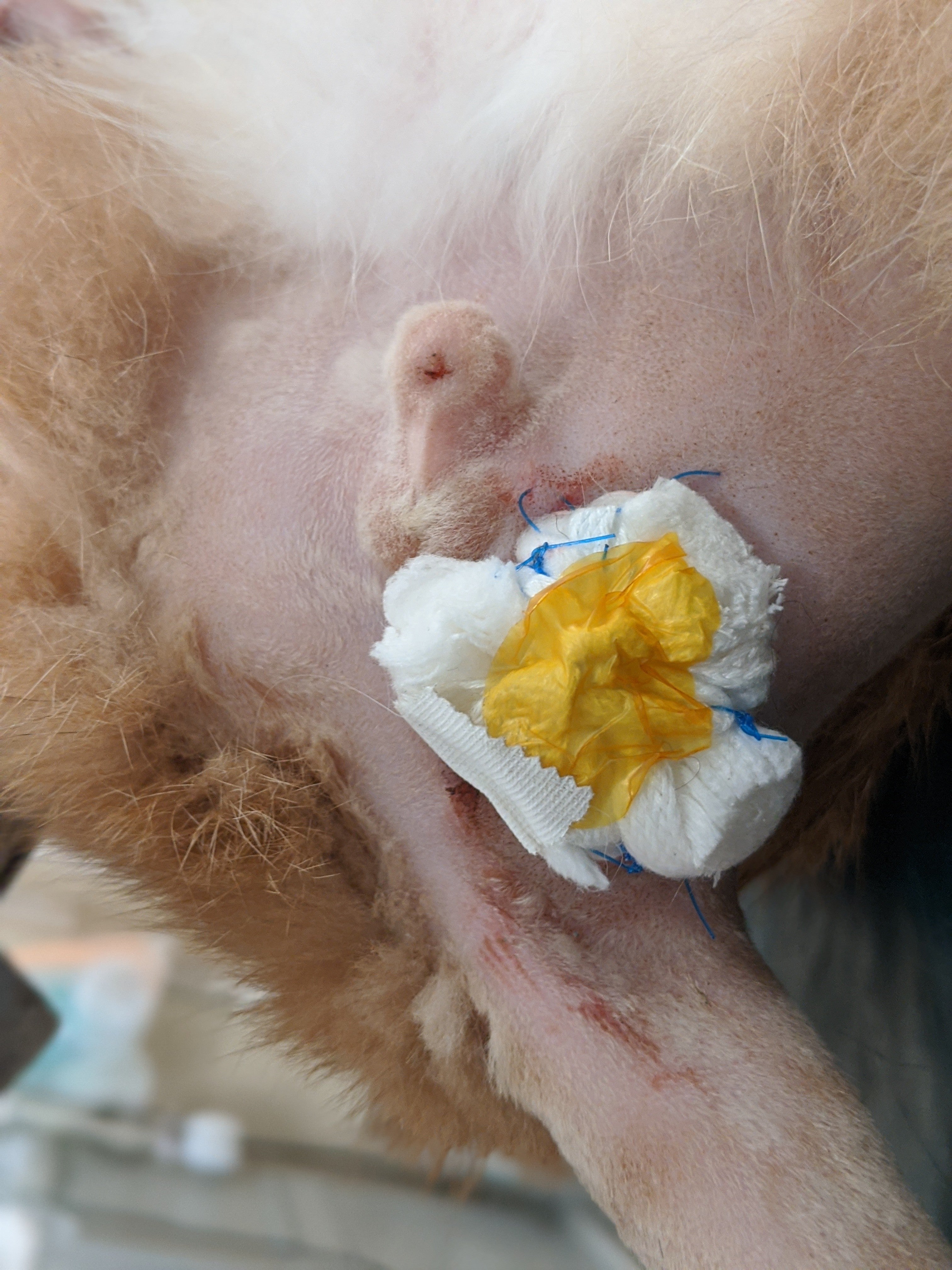
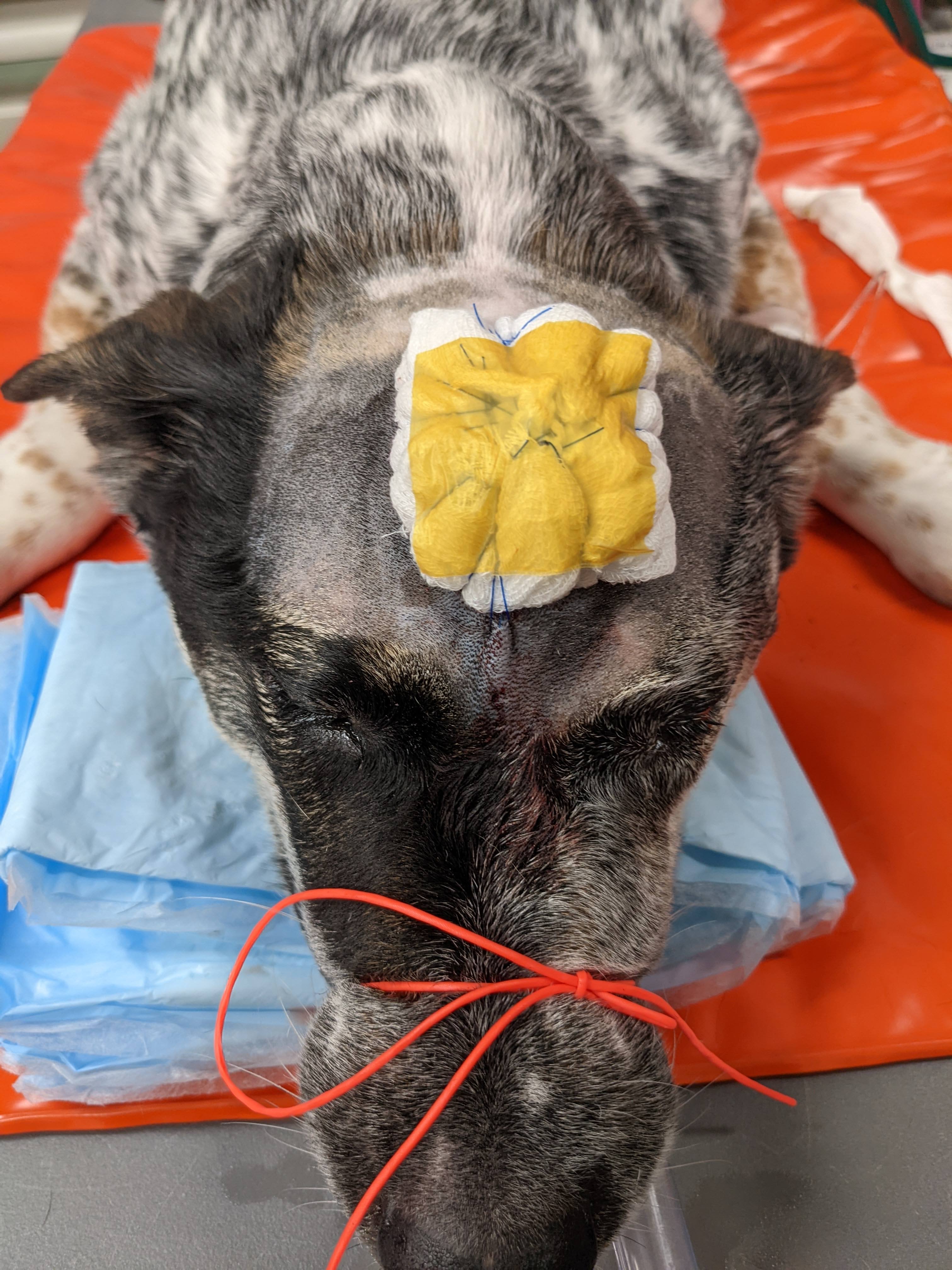
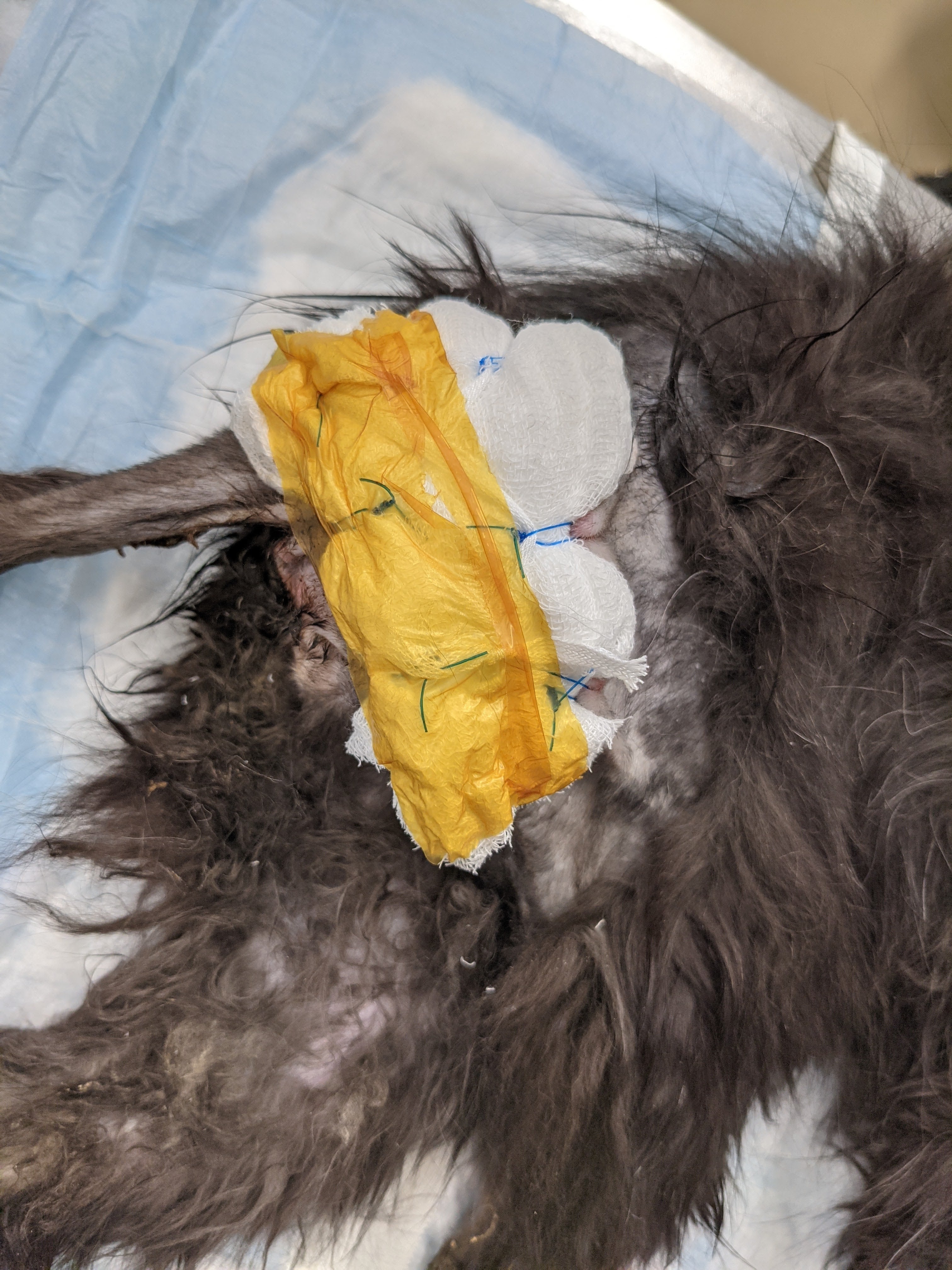


















Tie-Overs
A tie-over bandage is a specialized bandaging technique designed to securely cover and protect wounds located in areas of the body where traditional bandages won’t stay in place—such as the head, neck, axilla, inguinal region, or over joints. It’s especially useful for wounds healing by second intention, open wounds requiring frequent treatment, or in cases where tension or movement makes standard bandaging impossible.
Purpose and Function
The primary goal of a tie-over bandage is to hold a dressing firmly in place over a wound without relying on circumferential wraps. It uses suture loops or pre-placed anchoring devices around the wound margin, allowing for the dressing to be tied down and secured directly over the site. This setup makes it ideal for irregular surfaces and areas prone to movement, while still allowing access for daily cleaning and reassessment.
Bandage Construction
- Anchors: Multiple loops of suture (or pre-fabricated skin staples, buttons, or umbilical tape) are placed circumferentially around the wound margin, typically 1–2 cm from the wound edge. These loops act as anchor points.
- Primary Layer: A non-adherent dressing (such as Telfa or Adaptic) is placed over the wound. Topical treatments can be applied at this stage if indicated.
- Secondary Layer: Absorbent material or padding (e.g., gauze or roll cotton) is placed over the primary layer to provide protection and mild compression.
- Tertiary Layer (Tie-Over): Gauze or umbilical tape is laced through the suture loops in a crosshatch or shoelace pattern, securing the dressing in place. This layer can be easily removed and replaced for wound evaluation or treatment without disturbing the suture anchors.
Advantages
- Secure placement in difficult-to-bandage locations
- Easy wound access for repeated treatments
- Customizable to wounds of all shapes and sizes
- Reduces need for full limb or torso bandaging, increasing comfort for the patient
- Can be used over open, surgical, or traumatic wounds
Considerations
- Placement of the suture loops must be done aseptically under sedation or anesthesia.
- The tie-over dressing needs to be monitored and replaced when necessary, depending on the wound type and exudate levels.
- Over-tightening the laces can cause pressure injury, so gentle but secure tension is key.
- Not ideal for areas with very mobile or fragile skin unless special care is taken with the anchor points.
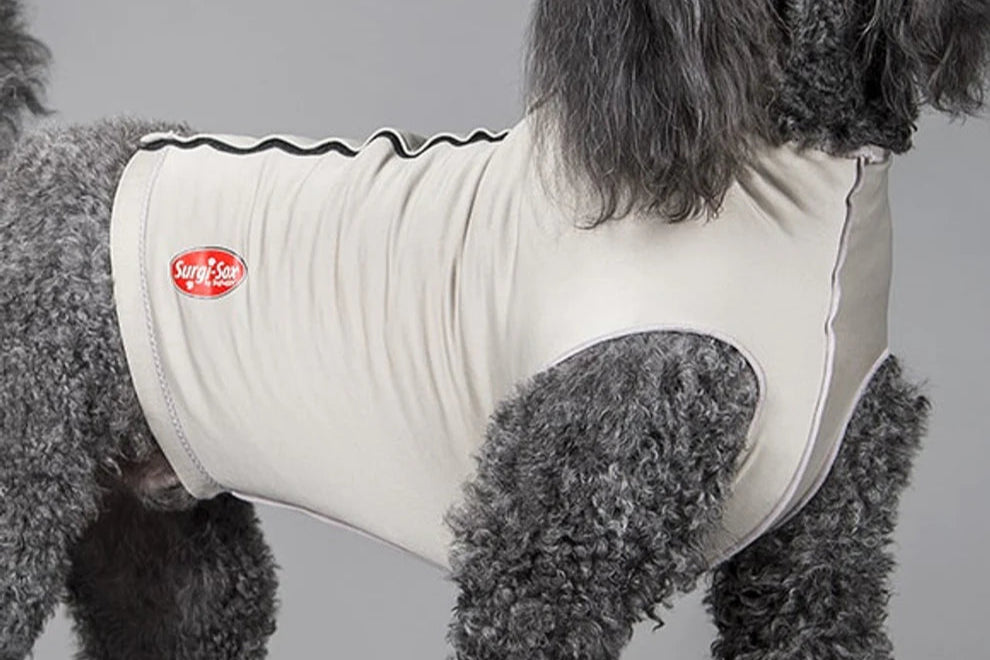
Recommended Product
The DogLeggs SurgiSuit is an excellent companion to tie-over bandages, offering an added layer of protection while still allowing the wound to breathe. Its breathable, machine-washable fabric keeps the tie-over secure, clean, and less prone to tampering—making it a smart, comfortable solution for extended wound care.
Want to see how these bandages are made?
Unlock access to the largest bandaging video library available and watch step-by-step how each bandage is applied correctly and effectively!
